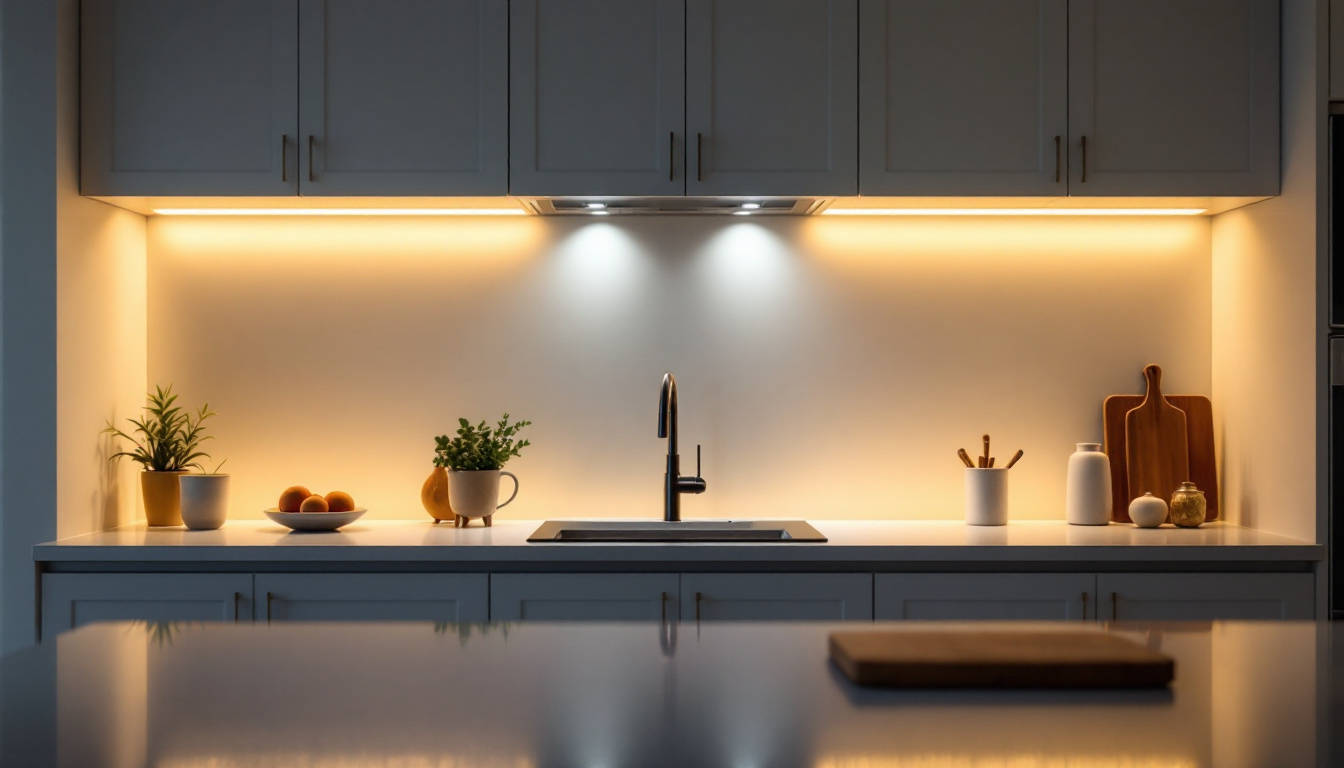
Four way switches are integral components in multi-way lighting systems, allowing for control of a single light fixture from multiple locations. For lighting contractors, mastering the functionality and installation of these switches is essential in delivering versatile lighting solutions to clients. This article delves into the mechanics, installation techniques, and troubleshooting tips for four way switches, enabling contractors to enhance their skill set and service offerings.
A four way switch is designed to work in conjunction with two three way switches, allowing for control of lighting from three or more locations. Unlike standard switches that have two terminals, a four way switch features four terminals, which facilitate the connection of multiple switches in a circuit. This configuration is particularly useful in larger spaces such as hallways, staircases, and open-concept living areas where multiple access points to lighting are desired.
The operation of a four way switch is relatively straightforward. When one of the three-way switches is flipped, the current flows through the four way switch, which either completes or breaks the circuit depending on its position. This design allows for seamless control of lighting from various points, enhancing convenience and functionality. It is important to note that the wiring configuration can vary depending on the specific layout of the switches and the light fixture, making a solid understanding of electrical principles crucial for effective installation.
Four way switches are commonly used in residential and commercial settings. In homes, they are ideal for controlling lights in long hallways, staircases, or large rooms with multiple entry points. In commercial spaces, they can be used in conference rooms or open areas where lighting needs to be adjusted from different locations. The flexibility of four way switches allows for a customizable lighting experience, catering to the unique needs of each space.
Moreover, these switches can be integrated with modern smart home systems, providing an additional layer of control and convenience. As lighting technology continues to evolve, understanding the applications of four way switches will enable contractors to offer innovative solutions that meet the needs of their clients. For instance, pairing four way switches with dimmers or smart bulbs can create dynamic lighting scenarios that enhance the ambiance of a room, allowing users to adjust brightness levels and color temperatures based on their preferences or activities. This adaptability not only improves the functionality of a space but also contributes to energy efficiency, as users can optimize lighting usage according to their needs.
Proper installation of four way switches is crucial for ensuring functionality and safety. Lighting contractors should be familiar with the wiring configurations and best practices to achieve a successful installation. Below are key steps and considerations for installing four way switches effectively.
Before beginning the installation, it’s essential to understand the wiring configuration. A typical setup involves two three way switches and one four way switch. The three way switches are located at the ends of the circuit, while the four way switch is placed in between them. The wiring connections should follow this general pattern:
It’s crucial to ensure that all connections are secure and that the wires are appropriately stripped to prevent any electrical hazards. Using wire nuts or electrical tape to secure connections can enhance safety and reliability. Additionally, labeling wires during disassembly can save time and reduce confusion during reassembly, especially in complex wiring scenarios.
Having the right tools and materials on hand can streamline the installation process. Essential tools include:
In addition to tools, the following materials are necessary:
Ensuring that all materials meet local electrical codes is paramount to guarantee safety and compliance. Moreover, it is advisable to check the amperage rating of the switches and wiring to ensure they can handle the load of the fixtures being controlled. This precaution helps prevent overheating and potential fire hazards, which can arise from under-rated components.
Safety should always be the top priority during any electrical installation. Before starting the installation, it is essential to turn off the power at the circuit breaker to avoid any risk of electric shock. Using a voltage tester to confirm that the power is off is a best practice that should never be overlooked. Additionally, wearing insulated gloves and safety goggles can provide an extra layer of protection against accidental contact with live wires.
Furthermore, it’s wise to familiarize oneself with the local electrical codes and regulations, as these can vary significantly from one region to another. This knowledge not only ensures compliance but also promotes best practices in electrical safety. If you are unsure or inexperienced with electrical work, consulting with a licensed electrician can provide peace of mind and ensure that the installation is performed correctly and safely.
Even seasoned lighting contractors may encounter challenges during the installation or operation of four way switches. Understanding common issues and their solutions can save time and enhance client satisfaction.
One of the most common challenges is incorrect wiring, which can lead to malfunctioning switches. If a light does not operate as intended, it is advisable to double-check the wiring connections. Ensuring that the traveler wires are connected correctly between the switches is critical. Miswiring can result in the light being on at all times or not functioning at all.
Using a voltage tester can help identify whether the switches are receiving power. If there is no voltage at the switch, tracing the wiring back to the power source may be necessary to locate the issue.
Another issue that may arise is a malfunctioning switch. If a four way switch fails, it may need to be replaced. Signs of a faulty switch include flickering lights or lights that do not respond to the switch. In such cases, it is essential to turn off the power at the circuit breaker before replacing the switch to ensure safety.
Contractors should also consider the quality of the switches being used. Investing in high-quality, reliable switches can minimize the risk of future problems and enhance the overall performance of the lighting system.
To excel in the installation and maintenance of four way switches, lighting contractors should adhere to best practices that promote safety, efficiency, and client satisfaction.
Electrical codes and regulations are continually evolving. Lighting contractors should stay informed about local codes to ensure compliance during installations. This knowledge not only enhances safety but also builds trust with clients who expect professional and compliant work.
Participating in continuing education courses or workshops can be beneficial for contractors looking to deepen their understanding of electrical systems and stay updated on industry standards.
Effective communication with clients is key to successful projects. Lighting contractors should take the time to explain the installation process, the functionality of four way switches, and any maintenance requirements. Providing clients with a clear understanding of their lighting system can lead to higher satisfaction and potential referrals.
Additionally, offering guidance on how to operate the switches and troubleshoot minor issues can empower clients and enhance their overall experience.
The lighting industry is rapidly evolving, with new technologies emerging that can enhance the functionality of four way switches. Contractors should be aware of these innovations to stay competitive and provide cutting-edge solutions to their clients.
As smart home technology becomes more prevalent, integrating four way switches with smart systems offers enhanced control and convenience. Smart switches can be controlled remotely via smartphone apps or voice commands, allowing users to manage their lighting with ease.
Contractors should explore options for smart four way switches that are compatible with existing systems, offering clients a modern solution that enhances their living spaces. This integration not only adds value but also positions contractors as forward-thinking professionals in the industry.
With an increasing focus on sustainability, energy-efficient lighting solutions are in high demand. Contractors should consider recommending LED lighting in conjunction with four way switches, as this combination can significantly reduce energy consumption while providing ample illumination.
Educating clients about the benefits of energy-efficient lighting and how it can be controlled using four way switches can lead to more informed decisions and greater satisfaction with their lighting systems.
Mastering four way switches is a valuable skill for lighting contractors, enhancing their ability to provide flexible and efficient lighting solutions. By understanding the mechanics, installation techniques, and troubleshooting methods associated with these switches, contractors can elevate their service offerings and meet the diverse needs of their clients.
As the lighting industry continues to evolve, staying informed about new technologies and best practices will ensure that contractors remain competitive and capable of delivering innovative solutions. Embracing the challenges and opportunities presented by four way switches will ultimately lead to greater success in the field.
Ready to take your lighting projects to the next level with high-quality four way switches and more? At LumenWholesale, we provide lighting contractors like you with the best spec-grade lighting products at unbeatable wholesale prices. Say goodbye to local distributor markups and hello to our extensive selection that meets the highest industry standards. Plus, with free shipping on bulk orders, you can stock up on reliable, high-performance lighting without any hidden fees. Elevate your lighting solutions today and enjoy the perfect blend of quality, affordability, and convenience. Visit LumenWholesale for Wholesale Lighting at the Best Value and make your next project shine!

Discover how offering kitchen under cabinet lighting solutions can boost your business as a lighting contractor.

Discover how to enhance your outdoor lighting with our guide on optimizing dawn to dusk lights.

Discover the ultimate guide to LED light bulb sizes and illuminate your space with confidence.

Discover how indoor arenas can transform lighting projects by providing the perfect environment for innovative designs and energy-efficient solutions.